-
EXECUTIVE SUMMARY
-
Market Overview
-
Key Findings
-
Market Segmentation
-
Competitive Landscape
-
Challenges and Opportunities
-
Future Outlook
-
MARKET INTRODUCTION
-
Definition
-
Scope of the study
- Research Objective
- Assumption
- Limitations
-
RESEARCH METHODOLOGY
-
Overview
-
Data Mining
-
Secondary Research
-
Primary Research
- Primary Interviews and Information Gathering Process
- Breakdown of Primary Respondents
-
Forecasting Model
-
Market Size Estimation
- Bottom-Up Approach
- Top-Down Approach
-
Data Triangulation
-
Validation
-
MARKET DYNAMICS
-
Overview
-
Drivers
-
Restraints
-
Opportunities
-
MARKET FACTOR ANALYSIS
-
Value chain Analysis
-
Porter's Five Forces Analysis
- Bargaining Power of Suppliers
- Bargaining Power of Buyers
- Threat of New Entrants
- Threat of Substitutes
- Intensity of Rivalry
-
COVID-19 Impact Analysis
- Market Impact Analysis
- Regional Impact
- Opportunity and Threat Analysis
-
FLEXIBLE PRINTED CIRCUIT BOARD MARKET, BY APPLICATION (USD BILLION)
-
Consumer Electronics
-
Automotive
-
Medical Devices
-
Telecommunications
-
Industrial Equipment
-
FLEXIBLE PRINTED CIRCUIT BOARD MARKET, BY TYPE (USD BILLION)
-
Single-Sided
-
Double-Sided
-
Multi-Layer
-
FLEXIBLE PRINTED CIRCUIT BOARD MARKET, BY TECHNOLOGY (USD BILLION)
-
Printed Circuit Boards
-
Flexible Circuit Boards
-
Rigid-Flex Circuit Boards
-
Hybrid Circuit Boards
-
FLEXIBLE PRINTED CIRCUIT BOARD MARKET, BY END USE (USD BILLION)
-
Electronics
-
Automotive
-
Healthcare
-
Aerospace
-
Telecom
-
FLEXIBLE PRINTED CIRCUIT BOARD MARKET, BY REGIONAL (USD BILLION)
-
North America
- US
- Canada
-
Europe
- Germany
- UK
- France
- Russia
- Italy
- Spain
- Rest of Europe
-
APAC
- China
- India
- Japan
- South Korea
- Malaysia
- Thailand
- Indonesia
- Rest of APAC
-
South America
- Brazil
- Mexico
- Argentina
- Rest of South America
-
MEA
- GCC Countries
- South Africa
- Rest of MEA
-
COMPETITIVE LANDSCAPE
-
Overview
-
Competitive Analysis
-
Market share Analysis
-
Major Growth Strategy in the Flexible Printed Circuit Board Market
-
Competitive Benchmarking
-
Leading Players in Terms of Number of Developments in the Flexible Printed Circuit Board Market
-
Key developments and growth strategies
- New Product Launch/Service Deployment
- Merger & Acquisitions
- Joint Ventures
-
Major Players Financial Matrix
- Sales and Operating Income
- Major Players R&D Expenditure. 2023
-
COMPANY PROFILES
-
Apple
- Financial Overview
- Products Offered
- Key Developments
- SWOT Analysis
- Key Strategies
-
Dycon
- Financial Overview
- Products Offered
- Key Developments
- SWOT Analysis
- Key Strategies
-
AT and S
- Financial Overview
- Products Offered
- Key Developments
- SWOT Analysis
- Key Strategies
-
Flexible Circuit Technologies
- Financial Overview
- Products Offered
- Key Developments
- SWOT Analysis
- Key Strategies
-
Shenzhen HUIKAI
- Financial Overview
- Products Offered
- Key Developments
- SWOT Analysis
- Key Strategies
-
Jabil
- Financial Overview
- Products Offered
- Key Developments
- SWOT Analysis
- Key Strategies
-
Hansei Technology
- Financial Overview
- Products Offered
- Key Developments
- SWOT Analysis
- Key Strategies
-
Unimicron Technology
- Financial Overview
- Products Offered
- Key Developments
- SWOT Analysis
- Key Strategies
-
Zhen Ding Technology
- Financial Overview
- Products Offered
- Key Developments
- SWOT Analysis
- Key Strategies
-
PCB Technologies
- Financial Overview
- Products Offered
- Key Developments
- SWOT Analysis
- Key Strategies
-
Samsung Electronics
- Financial Overview
- Products Offered
- Key Developments
- SWOT Analysis
- Key Strategies
-
Yamaha
- Financial Overview
- Products Offered
- Key Developments
- SWOT Analysis
- Key Strategies
-
Meiko Electronics
- Financial Overview
- Products Offered
- Key Developments
- SWOT Analysis
- Key Strategies
-
Nippon Mektron
- Financial Overview
- Products Offered
- Key Developments
- SWOT Analysis
- Key Strategies
-
Sumitomo Electric
- Financial Overview
- Products Offered
- Key Developments
- SWOT Analysis
- Key Strategies
-
APPENDIX
-
References
-
Related Reports
-
LIST OF TABLES
-
LIST OF ASSUMPTIONS
-
NORTH AMERICA FLEXIBLE PRINTED CIRCUIT BOARD MARKET SIZE ESTIMATES & FORECAST, BY APPLICATION, 2019-2032 (USD BILLIONS)
-
NORTH AMERICA FLEXIBLE PRINTED CIRCUIT BOARD MARKET SIZE ESTIMATES & FORECAST, BY TYPE, 2019-2032 (USD BILLIONS)
-
NORTH AMERICA FLEXIBLE PRINTED CIRCUIT BOARD MARKET SIZE ESTIMATES & FORECAST, BY TECHNOLOGY, 2019-2032 (USD BILLIONS)
-
NORTH AMERICA FLEXIBLE PRINTED CIRCUIT BOARD MARKET SIZE ESTIMATES & FORECAST, BY END USE, 2019-2032 (USD BILLIONS)
-
NORTH AMERICA FLEXIBLE PRINTED CIRCUIT BOARD MARKET SIZE ESTIMATES & FORECAST, BY REGIONAL, 2019-2032 (USD BILLIONS)
-
US FLEXIBLE PRINTED CIRCUIT BOARD MARKET SIZE ESTIMATES & FORECAST, BY APPLICATION, 2019-2032 (USD BILLIONS)
-
US FLEXIBLE PRINTED CIRCUIT BOARD MARKET SIZE ESTIMATES & FORECAST, BY TYPE, 2019-2032 (USD BILLIONS)
-
US FLEXIBLE PRINTED CIRCUIT BOARD MARKET SIZE ESTIMATES & FORECAST, BY TECHNOLOGY, 2019-2032 (USD BILLIONS)
-
US FLEXIBLE PRINTED CIRCUIT BOARD MARKET SIZE ESTIMATES & FORECAST, BY END USE, 2019-2032 (USD BILLIONS)
-
US FLEXIBLE PRINTED CIRCUIT BOARD MARKET SIZE ESTIMATES & FORECAST, BY REGIONAL, 2019-2032 (USD BILLIONS)
-
CANADA FLEXIBLE PRINTED CIRCUIT BOARD MARKET SIZE ESTIMATES & FORECAST, BY APPLICATION, 2019-2032 (USD BILLIONS)
-
CANADA FLEXIBLE PRINTED CIRCUIT BOARD MARKET SIZE ESTIMATES & FORECAST, BY TYPE, 2019-2032 (USD BILLIONS)
-
CANADA FLEXIBLE PRINTED CIRCUIT BOARD MARKET SIZE ESTIMATES & FORECAST, BY TECHNOLOGY, 2019-2032 (USD BILLIONS)
-
CANADA FLEXIBLE PRINTED CIRCUIT BOARD MARKET SIZE ESTIMATES & FORECAST, BY END USE, 2019-2032 (USD BILLIONS)
-
CANADA FLEXIBLE PRINTED CIRCUIT BOARD MARKET SIZE ESTIMATES & FORECAST, BY REGIONAL, 2019-2032 (USD BILLIONS)
-
EUROPE FLEXIBLE PRINTED CIRCUIT BOARD MARKET SIZE ESTIMATES & FORECAST, BY APPLICATION, 2019-2032 (USD BILLIONS)
-
EUROPE FLEXIBLE PRINTED CIRCUIT BOARD MARKET SIZE ESTIMATES & FORECAST, BY TYPE, 2019-2032 (USD BILLIONS)
-
EUROPE FLEXIBLE PRINTED CIRCUIT BOARD MARKET SIZE ESTIMATES & FORECAST, BY TECHNOLOGY, 2019-2032 (USD BILLIONS)
-
EUROPE FLEXIBLE PRINTED CIRCUIT BOARD MARKET SIZE ESTIMATES & FORECAST, BY END USE, 2019-2032 (USD BILLIONS)
-
EUROPE FLEXIBLE PRINTED CIRCUIT BOARD MARKET SIZE ESTIMATES & FORECAST, BY REGIONAL, 2019-2032 (USD BILLIONS)
-
GERMANY FLEXIBLE PRINTED CIRCUIT BOARD MARKET SIZE ESTIMATES & FORECAST, BY APPLICATION, 2019-2032 (USD BILLIONS)
-
GERMANY FLEXIBLE PRINTED CIRCUIT BOARD MARKET SIZE ESTIMATES & FORECAST, BY TYPE, 2019-2032 (USD BILLIONS)
-
GERMANY FLEXIBLE PRINTED CIRCUIT BOARD MARKET SIZE ESTIMATES & FORECAST, BY TECHNOLOGY, 2019-2032 (USD BILLIONS)
-
GERMANY FLEXIBLE PRINTED CIRCUIT BOARD MARKET SIZE ESTIMATES & FORECAST, BY END USE, 2019-2032 (USD BILLIONS)
-
GERMANY FLEXIBLE PRINTED CIRCUIT BOARD MARKET SIZE ESTIMATES & FORECAST, BY REGIONAL, 2019-2032 (USD BILLIONS)
-
UK FLEXIBLE PRINTED CIRCUIT BOARD MARKET SIZE ESTIMATES & FORECAST, BY APPLICATION, 2019-2032 (USD BILLIONS)
-
UK FLEXIBLE PRINTED CIRCUIT BOARD MARKET SIZE ESTIMATES & FORECAST, BY TYPE, 2019-2032 (USD BILLIONS)
-
UK FLEXIBLE PRINTED CIRCUIT BOARD MARKET SIZE ESTIMATES & FORECAST, BY TECHNOLOGY, 2019-2032 (USD BILLIONS)
-
UK FLEXIBLE PRINTED CIRCUIT BOARD MARKET SIZE ESTIMATES & FORECAST, BY END USE, 2019-2032 (USD BILLIONS)
-
UK FLEXIBLE PRINTED CIRCUIT BOARD MARKET SIZE ESTIMATES & FORECAST, BY REGIONAL, 2019-2032 (USD BILLIONS)
-
FRANCE FLEXIBLE PRINTED CIRCUIT BOARD MARKET SIZE ESTIMATES & FORECAST, BY APPLICATION, 2019-2032 (USD BILLIONS)
-
FRANCE FLEXIBLE PRINTED CIRCUIT BOARD MARKET SIZE ESTIMATES & FORECAST, BY TYPE, 2019-2032 (USD BILLIONS)
-
FRANCE FLEXIBLE PRINTED CIRCUIT BOARD MARKET SIZE ESTIMATES & FORECAST, BY TECHNOLOGY, 2019-2032 (USD BILLIONS)
-
FRANCE FLEXIBLE PRINTED CIRCUIT BOARD MARKET SIZE ESTIMATES & FORECAST, BY END USE, 2019-2032 (USD BILLIONS)
-
FRANCE FLEXIBLE PRINTED CIRCUIT BOARD MARKET SIZE ESTIMATES & FORECAST, BY REGIONAL, 2019-2032 (USD BILLIONS)
-
RUSSIA FLEXIBLE PRINTED CIRCUIT BOARD MARKET SIZE ESTIMATES & FORECAST, BY APPLICATION, 2019-2032 (USD BILLIONS)
-
RUSSIA FLEXIBLE PRINTED CIRCUIT BOARD MARKET SIZE ESTIMATES & FORECAST, BY TYPE, 2019-2032 (USD BILLIONS)
-
RUSSIA FLEXIBLE PRINTED CIRCUIT BOARD MARKET SIZE ESTIMATES & FORECAST, BY TECHNOLOGY, 2019-2032 (USD BILLIONS)
-
RUSSIA FLEXIBLE PRINTED CIRCUIT BOARD MARKET SIZE ESTIMATES & FORECAST, BY END USE, 2019-2032 (USD BILLIONS)
-
RUSSIA FLEXIBLE PRINTED CIRCUIT BOARD MARKET SIZE ESTIMATES & FORECAST, BY REGIONAL, 2019-2032 (USD BILLIONS)
-
ITALY FLEXIBLE PRINTED CIRCUIT BOARD MARKET SIZE ESTIMATES & FORECAST, BY APPLICATION, 2019-2032 (USD BILLIONS)
-
ITALY FLEXIBLE PRINTED CIRCUIT BOARD MARKET SIZE ESTIMATES & FORECAST, BY TYPE, 2019-2032 (USD BILLIONS)
-
ITALY FLEXIBLE PRINTED CIRCUIT BOARD MARKET SIZE ESTIMATES & FORECAST, BY TECHNOLOGY, 2019-2032 (USD BILLIONS)
-
ITALY FLEXIBLE PRINTED CIRCUIT BOARD MARKET SIZE ESTIMATES & FORECAST, BY END USE, 2019-2032 (USD BILLIONS)
-
ITALY FLEXIBLE PRINTED CIRCUIT BOARD MARKET SIZE ESTIMATES & FORECAST, BY REGIONAL, 2019-2032 (USD BILLIONS)
-
SPAIN FLEXIBLE PRINTED CIRCUIT BOARD MARKET SIZE ESTIMATES & FORECAST, BY APPLICATION, 2019-2032 (USD BILLIONS)
-
SPAIN FLEXIBLE PRINTED CIRCUIT BOARD MARKET SIZE ESTIMATES & FORECAST, BY TYPE, 2019-2032 (USD BILLIONS)
-
SPAIN FLEXIBLE PRINTED CIRCUIT BOARD MARKET SIZE ESTIMATES & FORECAST, BY TECHNOLOGY, 2019-2032 (USD BILLIONS)
-
SPAIN FLEXIBLE PRINTED CIRCUIT BOARD MARKET SIZE ESTIMATES & FORECAST, BY END USE, 2019-2032 (USD BILLIONS)
-
SPAIN FLEXIBLE PRINTED CIRCUIT BOARD MARKET SIZE ESTIMATES & FORECAST, BY REGIONAL, 2019-2032 (USD BILLIONS)
-
REST OF EUROPE FLEXIBLE PRINTED CIRCUIT BOARD MARKET SIZE ESTIMATES & FORECAST, BY APPLICATION, 2019-2032 (USD BILLIONS)
-
REST OF EUROPE FLEXIBLE PRINTED CIRCUIT BOARD MARKET SIZE ESTIMATES & FORECAST, BY TYPE, 2019-2032 (USD BILLIONS)
-
REST OF EUROPE FLEXIBLE PRINTED CIRCUIT BOARD MARKET SIZE ESTIMATES & FORECAST, BY TECHNOLOGY, 2019-2032 (USD BILLIONS)
-
REST OF EUROPE FLEXIBLE PRINTED CIRCUIT BOARD MARKET SIZE ESTIMATES & FORECAST, BY END USE, 2019-2032 (USD BILLIONS)
-
REST OF EUROPE FLEXIBLE PRINTED CIRCUIT BOARD MARKET SIZE ESTIMATES & FORECAST, BY REGIONAL, 2019-2032 (USD BILLIONS)
-
APAC FLEXIBLE PRINTED CIRCUIT BOARD MARKET SIZE ESTIMATES & FORECAST, BY APPLICATION, 2019-2032 (USD BILLIONS)
-
APAC FLEXIBLE PRINTED CIRCUIT BOARD MARKET SIZE ESTIMATES & FORECAST, BY TYPE, 2019-2032 (USD BILLIONS)
-
APAC FLEXIBLE PRINTED CIRCUIT BOARD MARKET SIZE ESTIMATES & FORECAST, BY TECHNOLOGY, 2019-2032 (USD BILLIONS)
-
APAC FLEXIBLE PRINTED CIRCUIT BOARD MARKET SIZE ESTIMATES & FORECAST, BY END USE, 2019-2032 (USD BILLIONS)
-
APAC FLEXIBLE PRINTED CIRCUIT BOARD MARKET SIZE ESTIMATES & FORECAST, BY REGIONAL, 2019-2032 (USD BILLIONS)
-
CHINA FLEXIBLE PRINTED CIRCUIT BOARD MARKET SIZE ESTIMATES & FORECAST, BY APPLICATION, 2019-2032 (USD BILLIONS)
-
CHINA FLEXIBLE PRINTED CIRCUIT BOARD MARKET SIZE ESTIMATES & FORECAST, BY TYPE, 2019-2032 (USD BILLIONS)
-
CHINA FLEXIBLE PRINTED CIRCUIT BOARD MARKET SIZE ESTIMATES & FORECAST, BY TECHNOLOGY, 2019-2032 (USD BILLIONS)
-
CHINA FLEXIBLE PRINTED CIRCUIT BOARD MARKET SIZE ESTIMATES & FORECAST, BY END USE, 2019-2032 (USD BILLIONS)
-
CHINA FLEXIBLE PRINTED CIRCUIT BOARD MARKET SIZE ESTIMATES & FORECAST, BY REGIONAL, 2019-2032 (USD BILLIONS)
-
INDIA FLEXIBLE PRINTED CIRCUIT BOARD MARKET SIZE ESTIMATES & FORECAST, BY APPLICATION, 2019-2032 (USD BILLIONS)
-
INDIA FLEXIBLE PRINTED CIRCUIT BOARD MARKET SIZE ESTIMATES & FORECAST, BY TYPE, 2019-2032 (USD BILLIONS)
-
INDIA FLEXIBLE PRINTED CIRCUIT BOARD MARKET SIZE ESTIMATES & FORECAST, BY TECHNOLOGY, 2019-2032 (USD BILLIONS)
-
INDIA FLEXIBLE PRINTED CIRCUIT BOARD MARKET SIZE ESTIMATES & FORECAST, BY END USE, 2019-2032 (USD BILLIONS)
-
INDIA FLEXIBLE PRINTED CIRCUIT BOARD MARKET SIZE ESTIMATES & FORECAST, BY REGIONAL, 2019-2032 (USD BILLIONS)
-
JAPAN FLEXIBLE PRINTED CIRCUIT BOARD MARKET SIZE ESTIMATES & FORECAST, BY APPLICATION, 2019-2032 (USD BILLIONS)
-
JAPAN FLEXIBLE PRINTED CIRCUIT BOARD MARKET SIZE ESTIMATES & FORECAST, BY TYPE, 2019-2032 (USD BILLIONS)
-
JAPAN FLEXIBLE PRINTED CIRCUIT BOARD MARKET SIZE ESTIMATES & FORECAST, BY TECHNOLOGY, 2019-2032 (USD BILLIONS)
-
JAPAN FLEXIBLE PRINTED CIRCUIT BOARD MARKET SIZE ESTIMATES & FORECAST, BY END USE, 2019-2032 (USD BILLIONS)
-
JAPAN FLEXIBLE PRINTED CIRCUIT BOARD MARKET SIZE ESTIMATES & FORECAST, BY REGIONAL, 2019-2032 (USD BILLIONS)
-
SOUTH KOREA FLEXIBLE PRINTED CIRCUIT BOARD MARKET SIZE ESTIMATES & FORECAST, BY APPLICATION, 2019-2032 (USD BILLIONS)
-
SOUTH KOREA FLEXIBLE PRINTED CIRCUIT BOARD MARKET SIZE ESTIMATES & FORECAST, BY TYPE, 2019-2032 (USD BILLIONS)
-
SOUTH KOREA FLEXIBLE PRINTED CIRCUIT BOARD MARKET SIZE ESTIMATES & FORECAST, BY TECHNOLOGY, 2019-2032 (USD BILLIONS)
-
SOUTH KOREA FLEXIBLE PRINTED CIRCUIT BOARD MARKET SIZE ESTIMATES & FORECAST, BY END USE, 2019-2032 (USD BILLIONS)
-
SOUTH KOREA FLEXIBLE PRINTED CIRCUIT BOARD MARKET SIZE ESTIMATES & FORECAST, BY REGIONAL, 2019-2032 (USD BILLIONS)
-
MALAYSIA FLEXIBLE PRINTED CIRCUIT BOARD MARKET SIZE ESTIMATES & FORECAST, BY APPLICATION, 2019-2032 (USD BILLIONS)
-
MALAYSIA FLEXIBLE PRINTED CIRCUIT BOARD MARKET SIZE ESTIMATES & FORECAST, BY TYPE, 2019-2032 (USD BILLIONS)
-
MALAYSIA FLEXIBLE PRINTED CIRCUIT BOARD MARKET SIZE ESTIMATES & FORECAST, BY TECHNOLOGY, 2019-2032 (USD BILLIONS)
-
MALAYSIA FLEXIBLE PRINTED CIRCUIT BOARD MARKET SIZE ESTIMATES & FORECAST, BY END USE, 2019-2032 (USD BILLIONS)
-
MALAYSIA FLEXIBLE PRINTED CIRCUIT BOARD MARKET SIZE ESTIMATES & FORECAST, BY REGIONAL, 2019-2032 (USD BILLIONS)
-
THAILAND FLEXIBLE PRINTED CIRCUIT BOARD MARKET SIZE ESTIMATES & FORECAST, BY APPLICATION, 2019-2032 (USD BILLIONS)
-
THAILAND FLEXIBLE PRINTED CIRCUIT BOARD MARKET SIZE ESTIMATES & FORECAST, BY TYPE, 2019-2032 (USD BILLIONS)
-
THAILAND FLEXIBLE PRINTED CIRCUIT BOARD MARKET SIZE ESTIMATES & FORECAST, BY TECHNOLOGY, 2019-2032 (USD BILLIONS)
-
THAILAND FLEXIBLE PRINTED CIRCUIT BOARD MARKET SIZE ESTIMATES & FORECAST, BY END USE, 2019-2032 (USD BILLIONS)
-
THAILAND FLEXIBLE PRINTED CIRCUIT BOARD MARKET SIZE ESTIMATES & FORECAST, BY REGIONAL, 2019-2032 (USD BILLIONS)
-
INDONESIA FLEXIBLE PRINTED CIRCUIT BOARD MARKET SIZE ESTIMATES & FORECAST, BY APPLICATION, 2019-2032 (USD BILLIONS)
-
INDONESIA FLEXIBLE PRINTED CIRCUIT BOARD MARKET SIZE ESTIMATES & FORECAST, BY TYPE, 2019-2032 (USD BILLIONS)
-
INDONESIA FLEXIBLE PRINTED CIRCUIT BOARD MARKET SIZE ESTIMATES & FORECAST, BY TECHNOLOGY, 2019-2032 (USD BILLIONS)
-
INDONESIA FLEXIBLE PRINTED CIRCUIT BOARD MARKET SIZE ESTIMATES & FORECAST, BY END USE, 2019-2032 (USD BILLIONS)
-
INDONESIA FLEXIBLE PRINTED CIRCUIT BOARD MARKET SIZE ESTIMATES & FORECAST, BY REGIONAL, 2019-2032 (USD BILLIONS)
-
REST OF APAC FLEXIBLE PRINTED CIRCUIT BOARD MARKET SIZE ESTIMATES & FORECAST, BY APPLICATION, 2019-2032 (USD BILLIONS)
-
REST OF APAC FLEXIBLE PRINTED CIRCUIT BOARD MARKET SIZE ESTIMATES & FORECAST, BY TYPE, 2019-2032 (USD BILLIONS)
-
REST OF APAC FLEXIBLE PRINTED CIRCUIT BOARD MARKET SIZE ESTIMATES & FORECAST, BY TECHNOLOGY, 2019-2032 (USD BILLIONS)
-
REST OF APAC FLEXIBLE PRINTED CIRCUIT BOARD MARKET SIZE ESTIMATES & FORECAST, BY END USE, 2019-2032 (USD BILLIONS)
-
REST OF APAC FLEXIBLE PRINTED CIRCUIT BOARD MARKET SIZE ESTIMATES & FORECAST, BY REGIONAL, 2019-2032 (USD BILLIONS)
-
SOUTH AMERICA FLEXIBLE PRINTED CIRCUIT BOARD MARKET SIZE ESTIMATES & FORECAST, BY APPLICATION, 2019-2032 (USD BILLIONS)
-
SOUTH AMERICA FLEXIBLE PRINTED CIRCUIT BOARD MARKET SIZE ESTIMATES & FORECAST, BY TYPE, 2019-2032 (USD BILLIONS)
-
SOUTH AMERICA FLEXIBLE PRINTED CIRCUIT BOARD MARKET SIZE ESTIMATES & FORECAST, BY TECHNOLOGY, 2019-2032 (USD BILLIONS)
-
SOUTH AMERICA FLEXIBLE PRINTED CIRCUIT BOARD MARKET SIZE ESTIMATES & FORECAST, BY END USE, 2019-2032 (USD BILLIONS)
-
SOUTH AMERICA FLEXIBLE PRINTED CIRCUIT BOARD MARKET SIZE ESTIMATES & FORECAST, BY REGIONAL, 2019-2032 (USD BILLIONS)
-
BRAZIL FLEXIBLE PRINTED CIRCUIT BOARD MARKET SIZE ESTIMATES & FORECAST, BY APPLICATION, 2019-2032 (USD BILLIONS)
-
BRAZIL FLEXIBLE PRINTED CIRCUIT BOARD MARKET SIZE ESTIMATES & FORECAST, BY TYPE, 2019-2032 (USD BILLIONS)
-
BRAZIL FLEXIBLE PRINTED CIRCUIT BOARD MARKET SIZE ESTIMATES & FORECAST, BY TECHNOLOGY, 2019-2032 (USD BILLIONS)
-
BRAZIL FLEXIBLE PRINTED CIRCUIT BOARD MARKET SIZE ESTIMATES & FORECAST, BY END USE, 2019-2032 (USD BILLIONS)
-
BRAZIL FLEXIBLE PRINTED CIRCUIT BOARD MARKET SIZE ESTIMATES & FORECAST, BY REGIONAL, 2019-2032 (USD BILLIONS)
-
MEXICO FLEXIBLE PRINTED CIRCUIT BOARD MARKET SIZE ESTIMATES & FORECAST, BY APPLICATION, 2019-2032 (USD BILLIONS)
-
MEXICO FLEXIBLE PRINTED CIRCUIT BOARD MARKET SIZE ESTIMATES & FORECAST, BY TYPE, 2019-2032 (USD BILLIONS)
-
MEXICO FLEXIBLE PRINTED CIRCUIT BOARD MARKET SIZE ESTIMATES & FORECAST, BY TECHNOLOGY, 2019-2032 (USD BILLIONS)
-
MEXICO FLEXIBLE PRINTED CIRCUIT BOARD MARKET SIZE ESTIMATES & FORECAST, BY END USE, 2019-2032 (USD BILLIONS)
-
MEXICO FLEXIBLE PRINTED CIRCUIT BOARD MARKET SIZE ESTIMATES & FORECAST, BY REGIONAL, 2019-2032 (USD BILLIONS)
-
ARGENTINA FLEXIBLE PRINTED CIRCUIT BOARD MARKET SIZE ESTIMATES & FORECAST, BY APPLICATION, 2019-2032 (USD BILLIONS)
-
ARGENTINA FLEXIBLE PRINTED CIRCUIT BOARD MARKET SIZE ESTIMATES & FORECAST, BY TYPE, 2019-2032 (USD BILLIONS)
-
ARGENTINA FLEXIBLE PRINTED CIRCUIT BOARD MARKET SIZE ESTIMATES & FORECAST, BY TECHNOLOGY, 2019-2032 (USD BILLIONS)
-
ARGENTINA FLEXIBLE PRINTED CIRCUIT BOARD MARKET SIZE ESTIMATES & FORECAST, BY END USE, 2019-2032 (USD BILLIONS)
-
ARGENTINA FLEXIBLE PRINTED CIRCUIT BOARD MARKET SIZE ESTIMATES & FORECAST, BY REGIONAL, 2019-2032 (USD BILLIONS)
-
REST OF SOUTH AMERICA FLEXIBLE PRINTED CIRCUIT BOARD MARKET SIZE ESTIMATES & FORECAST, BY APPLICATION, 2019-2032 (USD BILLIONS)
-
REST OF SOUTH AMERICA FLEXIBLE PRINTED CIRCUIT BOARD MARKET SIZE ESTIMATES & FORECAST, BY TYPE, 2019-2032 (USD BILLIONS)
-
REST OF SOUTH AMERICA FLEXIBLE PRINTED CIRCUIT BOARD MARKET SIZE ESTIMATES & FORECAST, BY TECHNOLOGY, 2019-2032 (USD BILLIONS)
-
REST OF SOUTH AMERICA FLEXIBLE PRINTED CIRCUIT BOARD MARKET SIZE ESTIMATES & FORECAST, BY END USE, 2019-2032 (USD BILLIONS)
-
REST OF SOUTH AMERICA FLEXIBLE PRINTED CIRCUIT BOARD MARKET SIZE ESTIMATES & FORECAST, BY REGIONAL, 2019-2032 (USD BILLIONS)
-
MEA FLEXIBLE PRINTED CIRCUIT BOARD MARKET SIZE ESTIMATES & FORECAST, BY APPLICATION, 2019-2032 (USD BILLIONS)
-
MEA FLEXIBLE PRINTED CIRCUIT BOARD MARKET SIZE ESTIMATES & FORECAST, BY TYPE, 2019-2032 (USD BILLIONS)
-
MEA FLEXIBLE PRINTED CIRCUIT BOARD MARKET SIZE ESTIMATES & FORECAST, BY TECHNOLOGY, 2019-2032 (USD BILLIONS)
-
MEA FLEXIBLE PRINTED CIRCUIT BOARD MARKET SIZE ESTIMATES & FORECAST, BY END USE, 2019-2032 (USD BILLIONS)
-
MEA FLEXIBLE PRINTED CIRCUIT BOARD MARKET SIZE ESTIMATES & FORECAST, BY REGIONAL, 2019-2032 (USD BILLIONS)
-
GCC COUNTRIES FLEXIBLE PRINTED CIRCUIT BOARD MARKET SIZE ESTIMATES & FORECAST, BY APPLICATION, 2019-2032 (USD BILLIONS)
-
GCC COUNTRIES FLEXIBLE PRINTED CIRCUIT BOARD MARKET SIZE ESTIMATES & FORECAST, BY TYPE, 2019-2032 (USD BILLIONS)
-
GCC COUNTRIES FLEXIBLE PRINTED CIRCUIT BOARD MARKET SIZE ESTIMATES & FORECAST, BY TECHNOLOGY, 2019-2032 (USD BILLIONS)
-
GCC COUNTRIES FLEXIBLE PRINTED CIRCUIT BOARD MARKET SIZE ESTIMATES & FORECAST, BY END USE, 2019-2032 (USD BILLIONS)
-
GCC COUNTRIES FLEXIBLE PRINTED CIRCUIT BOARD MARKET SIZE ESTIMATES & FORECAST, BY REGIONAL, 2019-2032 (USD BILLIONS)
-
SOUTH AFRICA FLEXIBLE PRINTED CIRCUIT BOARD MARKET SIZE ESTIMATES & FORECAST, BY APPLICATION, 2019-2032 (USD BILLIONS)
-
SOUTH AFRICA FLEXIBLE PRINTED CIRCUIT BOARD MARKET SIZE ESTIMATES & FORECAST, BY TYPE, 2019-2032 (USD BILLIONS)
-
SOUTH AFRICA FLEXIBLE PRINTED CIRCUIT BOARD MARKET SIZE ESTIMATES & FORECAST, BY TECHNOLOGY, 2019-2032 (USD BILLIONS)
-
SOUTH AFRICA FLEXIBLE PRINTED CIRCUIT BOARD MARKET SIZE ESTIMATES & FORECAST, BY END USE, 2019-2032 (USD BILLIONS)
-
SOUTH AFRICA FLEXIBLE PRINTED CIRCUIT BOARD MARKET SIZE ESTIMATES & FORECAST, BY REGIONAL, 2019-2032 (USD BILLIONS)
-
REST OF MEA FLEXIBLE PRINTED CIRCUIT BOARD MARKET SIZE ESTIMATES & FORECAST, BY APPLICATION, 2019-2032 (USD BILLIONS)
-
REST OF MEA FLEXIBLE PRINTED CIRCUIT BOARD MARKET SIZE ESTIMATES & FORECAST, BY TYPE, 2019-2032 (USD BILLIONS)
-
REST OF MEA FLEXIBLE PRINTED CIRCUIT BOARD MARKET SIZE ESTIMATES & FORECAST, BY TECHNOLOGY, 2019-2032 (USD BILLIONS)
-
REST OF MEA FLEXIBLE PRINTED CIRCUIT BOARD MARKET SIZE ESTIMATES & FORECAST, BY END USE, 2019-2032 (USD BILLIONS)
-
REST OF MEA FLEXIBLE PRINTED CIRCUIT BOARD MARKET SIZE ESTIMATES & FORECAST, BY REGIONAL, 2019-2032 (USD BILLIONS)
-
PRODUCT LAUNCH/PRODUCT DEVELOPMENT/APPROVAL
-
ACQUISITION/PARTNERSHIP
-
LIST OF FIGURES
-
MARKET SYNOPSIS
-
NORTH AMERICA FLEXIBLE PRINTED CIRCUIT BOARD MARKET ANALYSIS
-
US FLEXIBLE PRINTED CIRCUIT BOARD MARKET ANALYSIS BY APPLICATION
-
US FLEXIBLE PRINTED CIRCUIT BOARD MARKET ANALYSIS BY TYPE
-
US FLEXIBLE PRINTED CIRCUIT BOARD MARKET ANALYSIS BY TECHNOLOGY
-
US FLEXIBLE PRINTED CIRCUIT BOARD MARKET ANALYSIS BY END USE
-
US FLEXIBLE PRINTED CIRCUIT BOARD MARKET ANALYSIS BY REGIONAL
-
CANADA FLEXIBLE PRINTED CIRCUIT BOARD MARKET ANALYSIS BY APPLICATION
-
CANADA FLEXIBLE PRINTED CIRCUIT BOARD MARKET ANALYSIS BY TYPE
-
CANADA FLEXIBLE PRINTED CIRCUIT BOARD MARKET ANALYSIS BY TECHNOLOGY
-
CANADA FLEXIBLE PRINTED CIRCUIT BOARD MARKET ANALYSIS BY END USE
-
CANADA FLEXIBLE PRINTED CIRCUIT BOARD MARKET ANALYSIS BY REGIONAL
-
EUROPE FLEXIBLE PRINTED CIRCUIT BOARD MARKET ANALYSIS
-
GERMANY FLEXIBLE PRINTED CIRCUIT BOARD MARKET ANALYSIS BY APPLICATION
-
GERMANY FLEXIBLE PRINTED CIRCUIT BOARD MARKET ANALYSIS BY TYPE
-
GERMANY FLEXIBLE PRINTED CIRCUIT BOARD MARKET ANALYSIS BY TECHNOLOGY
-
GERMANY FLEXIBLE PRINTED CIRCUIT BOARD MARKET ANALYSIS BY END USE
-
GERMANY FLEXIBLE PRINTED CIRCUIT BOARD MARKET ANALYSIS BY REGIONAL
-
UK FLEXIBLE PRINTED CIRCUIT BOARD MARKET ANALYSIS BY APPLICATION
-
UK FLEXIBLE PRINTED CIRCUIT BOARD MARKET ANALYSIS BY TYPE
-
UK FLEXIBLE PRINTED CIRCUIT BOARD MARKET ANALYSIS BY TECHNOLOGY
-
UK FLEXIBLE PRINTED CIRCUIT BOARD MARKET ANALYSIS BY END USE
-
UK FLEXIBLE PRINTED CIRCUIT BOARD MARKET ANALYSIS BY REGIONAL
-
FRANCE FLEXIBLE PRINTED CIRCUIT BOARD MARKET ANALYSIS BY APPLICATION
-
FRANCE FLEXIBLE PRINTED CIRCUIT BOARD MARKET ANALYSIS BY TYPE
-
FRANCE FLEXIBLE PRINTED CIRCUIT BOARD MARKET ANALYSIS BY TECHNOLOGY
-
FRANCE FLEXIBLE PRINTED CIRCUIT BOARD MARKET ANALYSIS BY END USE
-
FRANCE FLEXIBLE PRINTED CIRCUIT BOARD MARKET ANALYSIS BY REGIONAL
-
RUSSIA FLEXIBLE PRINTED CIRCUIT BOARD MARKET ANALYSIS BY APPLICATION
-
RUSSIA FLEXIBLE PRINTED CIRCUIT BOARD MARKET ANALYSIS BY TYPE
-
RUSSIA FLEXIBLE PRINTED CIRCUIT BOARD MARKET ANALYSIS BY TECHNOLOGY
-
RUSSIA FLEXIBLE PRINTED CIRCUIT BOARD MARKET ANALYSIS BY END USE
-
RUSSIA FLEXIBLE PRINTED CIRCUIT BOARD MARKET ANALYSIS BY REGIONAL
-
ITALY FLEXIBLE PRINTED CIRCUIT BOARD MARKET ANALYSIS BY APPLICATION
-
ITALY FLEXIBLE PRINTED CIRCUIT BOARD MARKET ANALYSIS BY TYPE
-
ITALY FLEXIBLE PRINTED CIRCUIT BOARD MARKET ANALYSIS BY TECHNOLOGY
-
ITALY FLEXIBLE PRINTED CIRCUIT BOARD MARKET ANALYSIS BY END USE
-
ITALY FLEXIBLE PRINTED CIRCUIT BOARD MARKET ANALYSIS BY REGIONAL
-
SPAIN FLEXIBLE PRINTED CIRCUIT BOARD MARKET ANALYSIS BY APPLICATION
-
SPAIN FLEXIBLE PRINTED CIRCUIT BOARD MARKET ANALYSIS BY TYPE
-
SPAIN FLEXIBLE PRINTED CIRCUIT BOARD MARKET ANALYSIS BY TECHNOLOGY
-
SPAIN FLEXIBLE PRINTED CIRCUIT BOARD MARKET ANALYSIS BY END USE
-
SPAIN FLEXIBLE PRINTED CIRCUIT BOARD MARKET ANALYSIS BY REGIONAL
-
REST OF EUROPE FLEXIBLE PRINTED CIRCUIT BOARD MARKET ANALYSIS BY APPLICATION
-
REST OF EUROPE FLEXIBLE PRINTED CIRCUIT BOARD MARKET ANALYSIS BY TYPE
-
REST OF EUROPE FLEXIBLE PRINTED CIRCUIT BOARD MARKET ANALYSIS BY TECHNOLOGY
-
REST OF EUROPE FLEXIBLE PRINTED CIRCUIT BOARD MARKET ANALYSIS BY END USE
-
REST OF EUROPE FLEXIBLE PRINTED CIRCUIT BOARD MARKET ANALYSIS BY REGIONAL
-
APAC FLEXIBLE PRINTED CIRCUIT BOARD MARKET ANALYSIS
-
CHINA FLEXIBLE PRINTED CIRCUIT BOARD MARKET ANALYSIS BY APPLICATION
-
CHINA FLEXIBLE PRINTED CIRCUIT BOARD MARKET ANALYSIS BY TYPE
-
CHINA FLEXIBLE PRINTED CIRCUIT BOARD MARKET ANALYSIS BY TECHNOLOGY
-
CHINA FLEXIBLE PRINTED CIRCUIT BOARD MARKET ANALYSIS BY END USE
-
CHINA FLEXIBLE PRINTED CIRCUIT BOARD MARKET ANALYSIS BY REGIONAL
-
INDIA FLEXIBLE PRINTED CIRCUIT BOARD MARKET ANALYSIS BY APPLICATION
-
INDIA FLEXIBLE PRINTED CIRCUIT BOARD MARKET ANALYSIS BY TYPE
-
INDIA FLEXIBLE PRINTED CIRCUIT BOARD MARKET ANALYSIS BY TECHNOLOGY
-
INDIA FLEXIBLE PRINTED CIRCUIT BOARD MARKET ANALYSIS BY END USE
-
INDIA FLEXIBLE PRINTED CIRCUIT BOARD MARKET ANALYSIS BY REGIONAL
-
JAPAN FLEXIBLE PRINTED CIRCUIT BOARD MARKET ANALYSIS BY APPLICATION
-
JAPAN FLEXIBLE PRINTED CIRCUIT BOARD MARKET ANALYSIS BY TYPE
-
JAPAN FLEXIBLE PRINTED CIRCUIT BOARD MARKET ANALYSIS BY TECHNOLOGY
-
JAPAN FLEXIBLE PRINTED CIRCUIT BOARD MARKET ANALYSIS BY END USE
-
JAPAN FLEXIBLE PRINTED CIRCUIT BOARD MARKET ANALYSIS BY REGIONAL
-
SOUTH KOREA FLEXIBLE PRINTED CIRCUIT BOARD MARKET ANALYSIS BY APPLICATION
-
SOUTH KOREA FLEXIBLE PRINTED CIRCUIT BOARD MARKET ANALYSIS BY TYPE
-
SOUTH KOREA FLEXIBLE PRINTED CIRCUIT BOARD MARKET ANALYSIS BY TECHNOLOGY
-
SOUTH KOREA FLEXIBLE PRINTED CIRCUIT BOARD MARKET ANALYSIS BY END USE
-
SOUTH KOREA FLEXIBLE PRINTED CIRCUIT BOARD MARKET ANALYSIS BY REGIONAL
-
MALAYSIA FLEXIBLE PRINTED CIRCUIT BOARD MARKET ANALYSIS BY APPLICATION
-
MALAYSIA FLEXIBLE PRINTED CIRCUIT BOARD MARKET ANALYSIS BY TYPE
-
MALAYSIA FLEXIBLE PRINTED CIRCUIT BOARD MARKET ANALYSIS BY TECHNOLOGY
-
MALAYSIA FLEXIBLE PRINTED CIRCUIT BOARD MARKET ANALYSIS BY END USE
-
MALAYSIA FLEXIBLE PRINTED CIRCUIT BOARD MARKET ANALYSIS BY REGIONAL
-
THAILAND FLEXIBLE PRINTED CIRCUIT BOARD MARKET ANALYSIS BY APPLICATION
-
THAILAND FLEXIBLE PRINTED CIRCUIT BOARD MARKET ANALYSIS BY TYPE
-
THAILAND FLEXIBLE PRINTED CIRCUIT BOARD MARKET ANALYSIS BY TECHNOLOGY
-
THAILAND FLEXIBLE PRINTED CIRCUIT BOARD MARKET ANALYSIS BY END USE
-
THAILAND FLEXIBLE PRINTED CIRCUIT BOARD MARKET ANALYSIS BY REGIONAL
-
INDONESIA FLEXIBLE PRINTED CIRCUIT BOARD MARKET ANALYSIS BY APPLICATION
-
INDONESIA FLEXIBLE PRINTED CIRCUIT BOARD MARKET ANALYSIS BY TYPE
-
INDONESIA FLEXIBLE PRINTED CIRCUIT BOARD MARKET ANALYSIS BY TECHNOLOGY
-
INDONESIA FLEXIBLE PRINTED CIRCUIT BOARD MARKET ANALYSIS BY END USE
-
INDONESIA FLEXIBLE PRINTED CIRCUIT BOARD MARKET ANALYSIS BY REGIONAL
-
REST OF APAC FLEXIBLE PRINTED CIRCUIT BOARD MARKET ANALYSIS BY A"
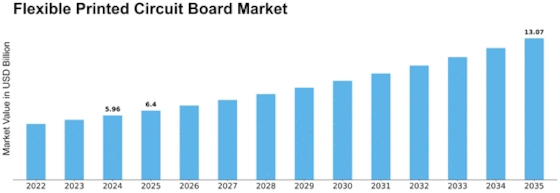
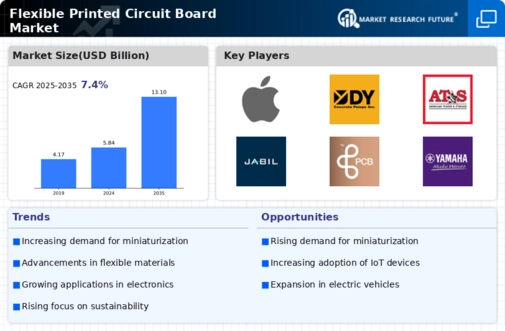
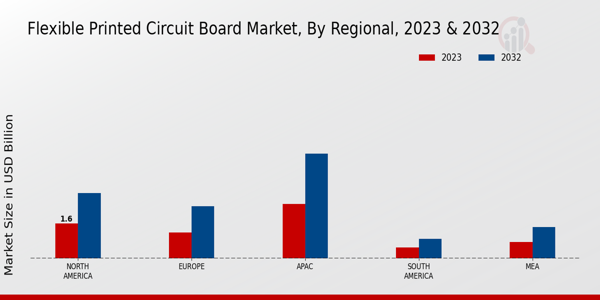


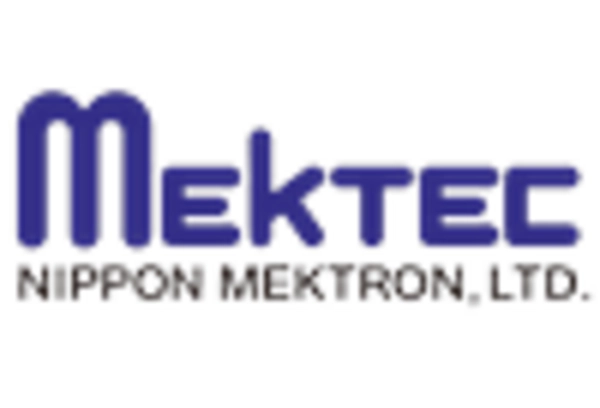
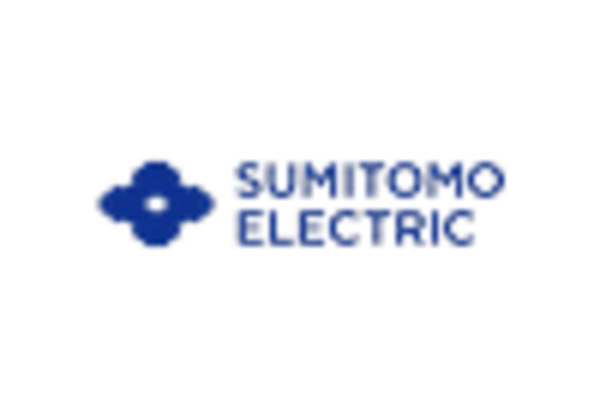
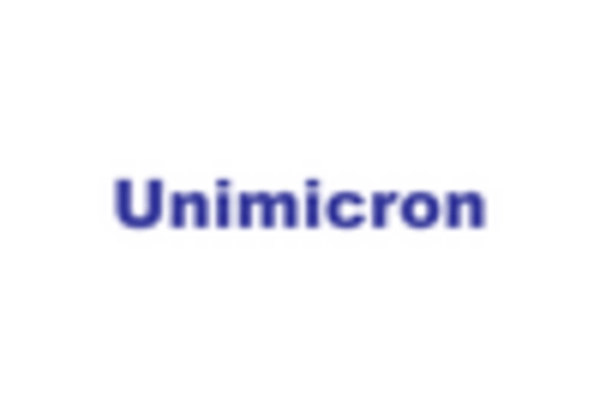
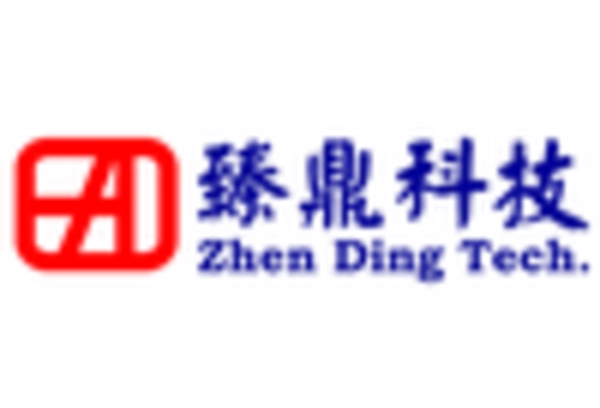

Leave a Comment